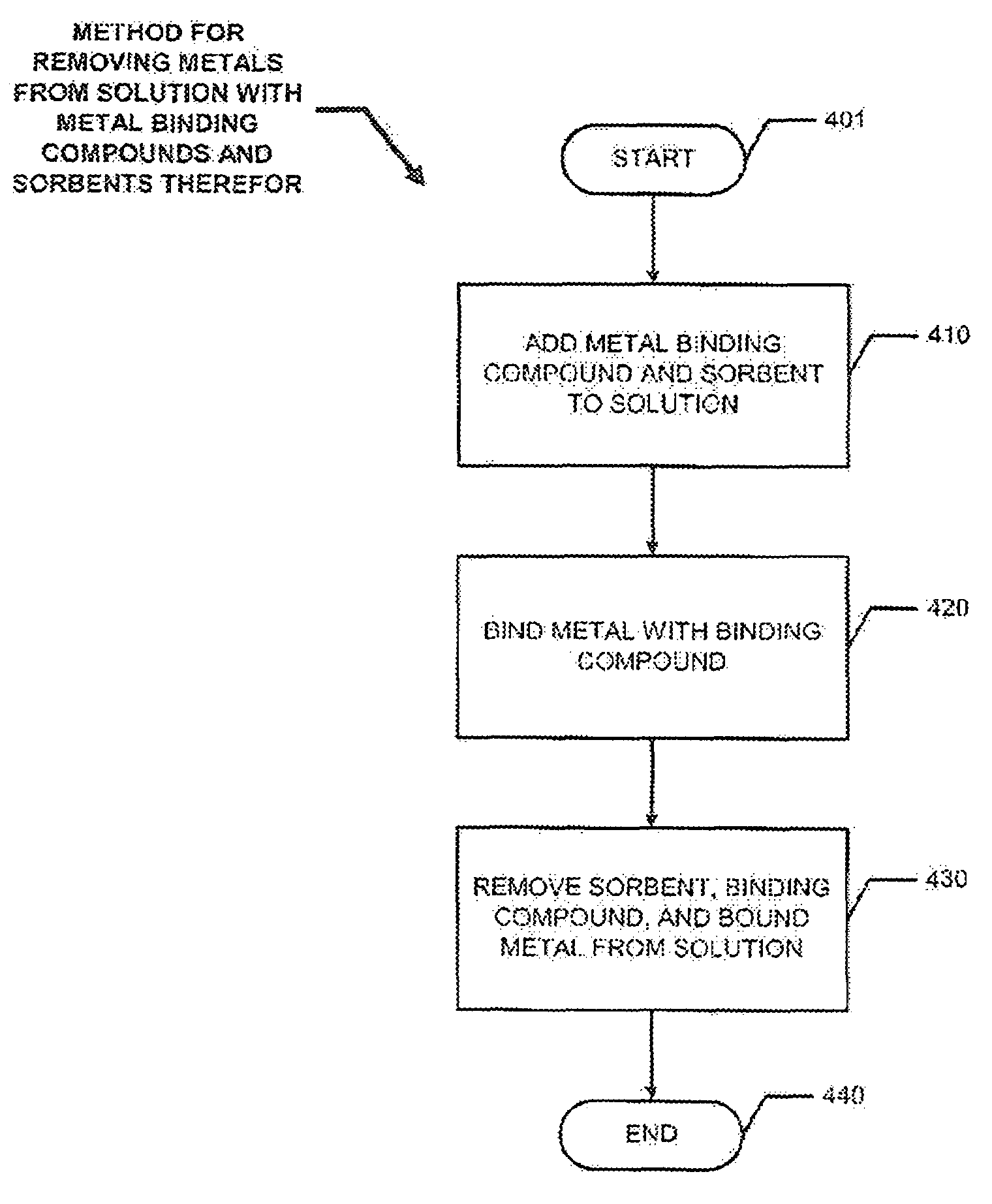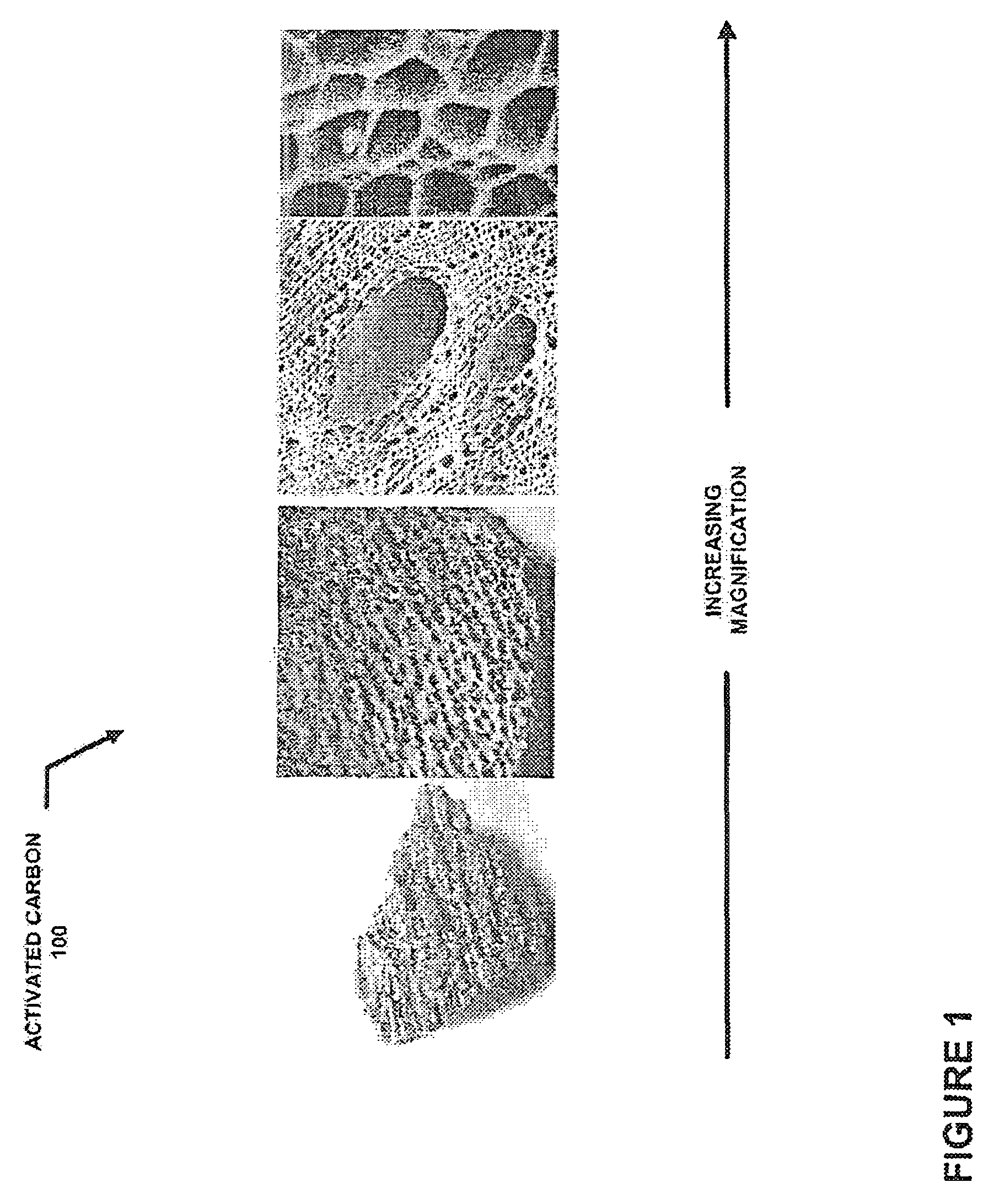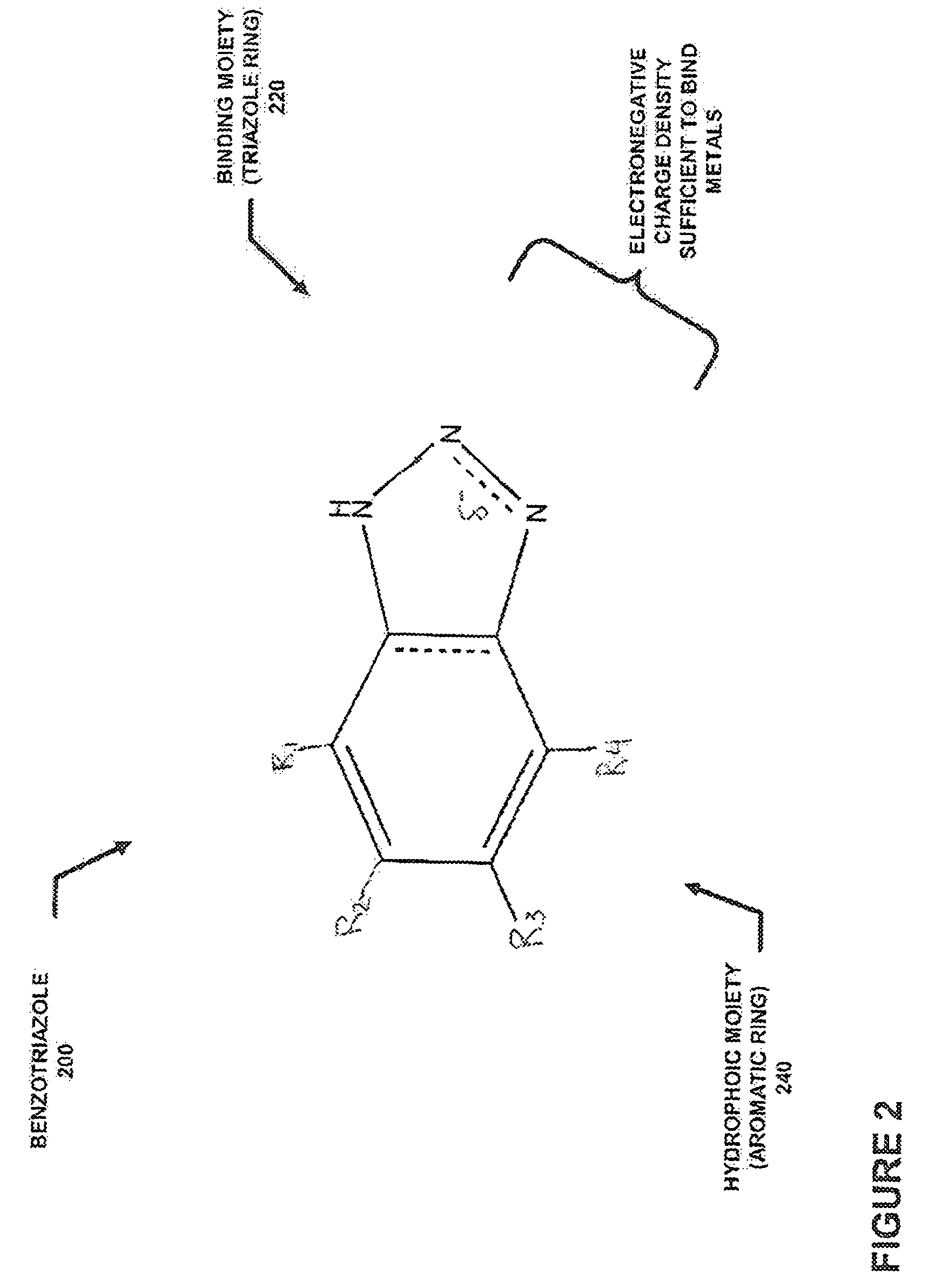Removing metals from solution using metal binding compounds and sorbents therefor
a technology of metal binding compounds and sorbents, which is applied in the direction of quarries, other chemical processes, waste water treatment, etc., can solve the problems of providing a perfect approach for all, affecting and affecting the quality of the solution. , to achieve the effect of reducing the hydrophilic character of benzotriazol
- Summary
- Abstract
- Description
- Claims
- Application Information
AI Technical Summary
Benefits of technology
Problems solved by technology
Method used
Image
Examples
Embodiment Construction
[0081]Disclosed herein are novel and useful systems and methods for removing metals from such metal containing solutions as acid mine drainage and industrial wastewaters. In the following description, for the purpose of explanation, numerous specific details are set forth in order to provide a thorough understanding of the present invention. It will be apparent, however, to one skilled in the art that the present invention may be practiced without some of these specific details. For example, other sorbents and metal binding compounds that those specifically disclosed herein may be used in alternate embodiments of the present invention. In other instances, well known structures and devices are shown in block diagram form.
[0082]In a typical embodiment of the present invention, a metal binding compound may be used to bind a metal in soultion and a sorbent may be used to sorb the compound so that the metal may be removed from the solution. In specific embodiments of the present inventio...
PUM
| Property | Measurement | Unit |
|---|---|---|
| pH | aaaaa | aaaaa |
| pH | aaaaa | aaaaa |
| pH | aaaaa | aaaaa |
Abstract
Description
Claims
Application Information
 Login to View More
Login to View More - R&D
- Intellectual Property
- Life Sciences
- Materials
- Tech Scout
- Unparalleled Data Quality
- Higher Quality Content
- 60% Fewer Hallucinations
Browse by: Latest US Patents, China's latest patents, Technical Efficacy Thesaurus, Application Domain, Technology Topic, Popular Technical Reports.
© 2025 PatSnap. All rights reserved.Legal|Privacy policy|Modern Slavery Act Transparency Statement|Sitemap|About US| Contact US: help@patsnap.com



